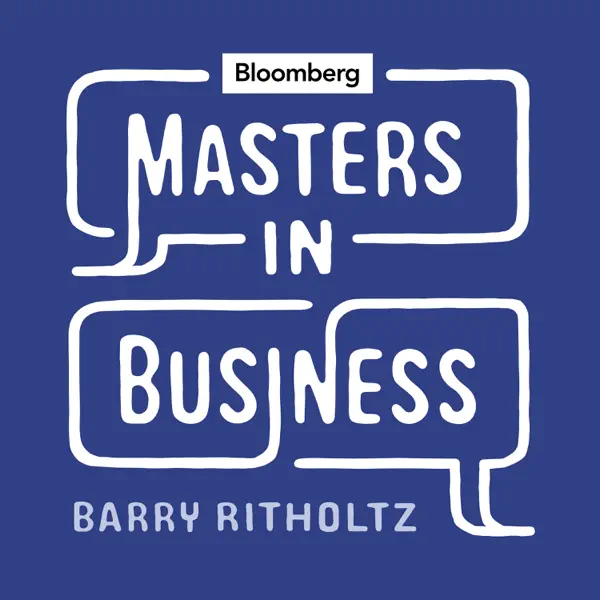At the Money: Forecasting Recessions with Claudia Sahm (January 31, 2024 )
Investors don’t like recessions. But how can they tell if one’s coming? There’s an indicator for that. It’s called the “Sahm Rule,” named for economist Claudia Sahm. In this episode, we discuss how to use labor data to forecast recessions.
Full transcript below.
~~~
About this week’s guest:
Sahm is a former Federal Reserve economist best known for the rule bearing her name. She runs Sahm Consulting.
For more info, see:
Sahm Consulting
Stay-at-Home (SAHM) Macro!
Substack
~~~
Find all of the previous At the Money episodes here, and in the MiB feed on Apple Podcasts, YouTube, Spotify, and Bloomberg.
TRANSCRIPT
Investors don’t love recessions. Bad things happen when the economy contracts. Top-line corporate growth stops, revenue and earnings fall, which sends stock prices lower.
Ever since the pandemic ended, lots of investors fearing a recession was imminent have gotten scared out of equity markets that any day now recession still hasn’t shown up. This is despite the prediction of many well-known economists over the past 2 years.
There still has been no recession. As it turns out, there are ways investors can tell if an economic contraction is really coming.
[Music]
I’m Barry Ritholtz, and on today’s edition of At The Money, we’re gonna discuss how to accurately identify– in advance, in real-time – when the economy is going into recession. To help us unpack all of this and what it means for your portfolio, let’s bring in Claudia Sahm. She is a former Federal Reserve economist and creator of what has become known as the Sahm rule.
Claudia, welcome to Bloomberg’s At The Money.
Claudia Sahm: Happy to be here.
Barry Ritholtz: So let’s start with the basics. Tell us what happens to the economy during a recession.
Claudia Sahm: A recession is a broad-based contraction in economic activity. So it’s not about industry, it’s not about one part of the country. It hits All of us in a recession hits hard. It’s and that’s why we wanna fight them. That’s why we wanna know if they’re coming.
Barry Ritholtz: So that obviously is not great. How long and deep are the typical recessions?
Claudia Sahm: It varies. It depends on what happened. The global financial crisis in 2008, that was a big, fast, deep recession. That was very bad.
2001, the bursting of the dot com bubble. That’s one of the mildest recessions that we’ve seen in a very long time. So it depends on what hits us as to how hard we go down.
Barry Ritholtz: Really interesting. It’s funny you mentioned ‘01 because the year before and the year after 2000 and 2002 was one of those rare years when the stock market was down, even though there wasn’t a recession. Surprisingly, that was a fairly mild recession. Where did the 2001 recession show up in the data?
Claudia Sahm: In 2001, we saw the unemployment rate rise, not as much as in 2008 or in 2020. And we did see GDP decline, though it was not as severe as we’ve seen in other recessions.
Barry Ritholtz: So you developed an indicator, what people call the Sahm rule, to help us figure out in advance when recessions are coming. Tell us about it.
Claudia Sahm: The Sahm rule looks for relatively small increases in the unemployment rate to say we’re in a recession. Specifically, we look at the unemployment rate, the national unemployment rate, take the 3-month average. We don’t wanna get faked out by the bumps and wiggles. We compare the most recent reading to the lowest of these 3-month averages over the prior 12 months.
If that difference is half a percentage point or more, We are in a recession.
Barry Ritholtz: So let me get a little more specific. How timely is this indicator when it goes off and what’s its track record been like?
Claudia Sahm: It has a perfect track record since the 1970s. It’s never triggered outside of a recession and it’s always triggered early in one. Far earlier than we would have the official recession dating by the National Bureau of Economic Research, and it’s within the first 3, 4 months of a recession, and that also is before, we would have the 2 quarters of GDP that would typically be used to say we’re in a recession.
Barry Ritholtz: Although we’ve seen 2 negative quarters of GDP where we haven’t had recessions. That’s not an official indicator anywhere. It just seems to be a rule of thumb that, some countries use, but we don’t really use that here in the United States. Right? We have the NBER and all of their many, uh, indicators that they track.
Claudia Sahm: What’s amazing is so many relationships have broken in this COVID and the recovery. That 2 quarters of a decline in GDP always happens in a recession. You gotta go back to 1947 to find a time when you have 2 quarters outside of a recession. So that just shows one should be really careful right now with the “rules of thumb” that have worked in the past.
Barry Ritholtz: Right. You can find a good parallel between the post-war era and the post-pandemic era, giant fiscal stimulus, etcetera. But let’s stick with the Sahm rule for a moment. Most economic rules that I’m familiar with, they’re pretty complex, they rely on a lot of moving parts. The Sahm rule seems fairly simple – a single labor market indicator – Is that oversimplifying the complexity of the economy, or do all roads in the economy lead to the labor market?
Claudia Sahm: The Sahm rule is simple by design. Its purpose was to say, “hey, Congress send out the stimulus checks.” And frankly, do it automatically, just tie it to the Sahm rule. That’s why it exists. It’s been used for a lot of other purposes recently.
I will say there’s a saying among economists. If you had to be on a desert island and you could only have one data series to tell you what the US economy is doing, it’s the unemployment rate. [umm hmm]. It is it tells us so much for a lot of different reasons.
It tells us so much about where we are. And frankly, as you see it start to drift up, it can tell us where we’re headed. It’s not a perfect signal, but it is something to say, “Yeah, even before the summer would trigger, you should pay attention to it.”
Barry Ritholtz: So let’s talk a little bit about that. You know, since the pandemic ended, It seems almost immediately after the recovery began, we began hearing about a recession. This has already been going on for 2 years. It’s imminent. It’s about to happen.
And as that drumbeat has gotten louder, inflation has gone down, unemployment has fallen, consumer spending has remained robust, even wage gains have gotten better. If anything, the economy has improved.
Why this constant drumbeat that a recession is imminent?
Claudia Sahm: Many economists, many of my peers got stuck in the 1970s.
Inflation went up. I mean, legitimately, in 2021, that was the first time in a long time we’d seen Inflation above 2 percent. It spiked, it went up fast. If you i knew nothing else and just saw inflation going up, typically, you’d say, ”Oh, okay, the Federal Reserve has gotta step in. They gotta raise interest rates.” And in the past, when the Fed has done that, it ends up in a bad place. Right. Like, it’s hard to do that.
The point I had made the entire time was that most of that inflation was coming from disruptions from COVID. And as we went into 2022, there were also disruptions from Putin invading Ukraine. [Mhmm]. That’s not demand. That’s not what interest rates solve.
Jay Powell did not unload the docks in LA. He didn’t take a second job. He didn’t give the vaccine out. These were all things that needed to happen to get inflation down.
It has been so slow to get back on track, and yet 2023 – which we were told was impossible – massive declines in inflation, unemployment at its lowest in, you know, since the 1960s. That shouldn’t have happened, and yet it made perfect sense if you thought about, “Hey, there was a pandemic; Hey, there was a war in Europe.”
So that’s what has worked out, and that’s what puts us on a path to the elusive soft landing.
Barry Ritholtz: So to paraphrase James Carville, it’s the pandemic, stupid. [Mhmm].
So what other periods are there in history that are kinda comparable to what we’ve experienced over the past year or two, where there are all these recession warnings, and yet no recession?
Claudia Sahm: Recessions aren’t supposed to be forecastable. So for 2 years to have recession calls so loud has been a little mind blowing. Right? Like, we’re not supposed to know when these are coming – and we’re certainly not supposed to be so certain about it –
you’d have to go outside of living memory to find episodes of inflation, like what we’re seeing after the two world wars, after the 1918 pandemic.
I mean, these are places we don’t have very good data [Right]. In terms and and we obviously don’t have experience with them.
So to gravitate back to the 1970s, the Volcker Fed, you know, the early eighties, it it makes sense why that’s where people go because that’s where we have data. That’s what we studied. But, like, that’s not what this is.
Barry Ritholtz: Very different world in the seventies than today. So you mentioned we don’t have a giant data set. What have we had, 17 recessions in the past century and change? Given that we can’t be generally confident about recession forecasts, how confident should we be in the Sahm rule? You actually had discussed, “Hey, maybe it’s not gonna be right this time.”
Claudia Sahm: Absolutely. If the Sahm Rulw were gonna break, It would be this time and break in the sense that we could hit that half-a-percentage point trigger, and then the unemployment rate doesn’t really rise that much more. We don’t go into recession.
Typically, after the Sahm Rule triggers, you have almost a 4 percentage point increase in unemployment relative to the low. 2001, that was the smallest, and it was Employment relative to the low. 2001, that was the smallest, and it was even still 2 percentage points
So it would be very Not usual for you to get up to 4% which – we kinda have to hang around 4% for a while to have it trigger – and then just kinda hang there And maybe come back down later. There’s a very good case for why this could happen. It goes back to these disruptions of COVID. We. it’s taken the labor market time to heal too. We had all these labor shortages. We need to bring people back in.
Millions of people walked away from jobs because of Caregiving because they didn’t wanna die, and we stopped processing immigrant work visas. So these things are happening. There’s this kind of catch-up now. Now it’s like there are more people and the jobs have to catch up versus in the labor shortage it was the other way around. That just can make things really messy. And, again, if the summer were ever going to break, it’s this time. And frankly, we have seen relationships breaking left and right, so I would be in good company.
Barry Ritholtz: So let’s talk about the things that have broken in the post-pandemic era.
We’ve seen shortages of single-family homes. We’ve seen Shortages of semiconductors – it’s still a long way to get a new automobile – and it appears that we’re still dealing with a labor shortage.
How many more workers does this country need to reduce some of the tightness in the labor market?
Claudia Sahm: We started to make a good bit of progress in the second half of last year in terms of getting workers back. And in some cases, even better than before. Women’s prime-age employment is at record highs; the percentage of workers with disabilities who have jobs – record high. Even some very marginalized groups like black men, their labor force participation has looked great. Black unemployment rate has been low. We need these groups to come in, not just to make up the hole that the pandemic created, but to, like, keep it going – the labor market is really strong right now. And that’s that’s a good thing.
And that one thing that we need to build on because as you said, like, there’s still a need for talent and productivity, and that was the big kinda under the hood story of last year.
Claudia Sahm: So I wanna leave investors with a little bit of advice from the creator of the Sahm rule. Tell people what they should be looking for if they really wanna have the best way of anticipating a potential recession.
Claudia Sahm: Keep your eyes on the labor market. The labor market is so essential to American consumers. Like, your paycheck, that’s what you spend. So if we lose the labor market, we lose consumers. If we lose consumers, we’re done.
Barry Ritholtz: And that’s how we get a recession and typically a weak stock market.
So to wrap up: Investors who are concerned about all these recession calls we’ve been hearing about for the past 2 years should just ignore them.
And if you really wanna know when a recession is coming, keep your eye on the unemployment rate, when the 3-month moving average ticks up 0.50 of a percentage point relative to its previous 12-month low – that’s a warning sign – get ready for a possible recession.
I’m Barry Ritholtz, and this is Bloomberg’s at the Money.
~~~
















